What Google trends reveal about English
Oct 22, 2021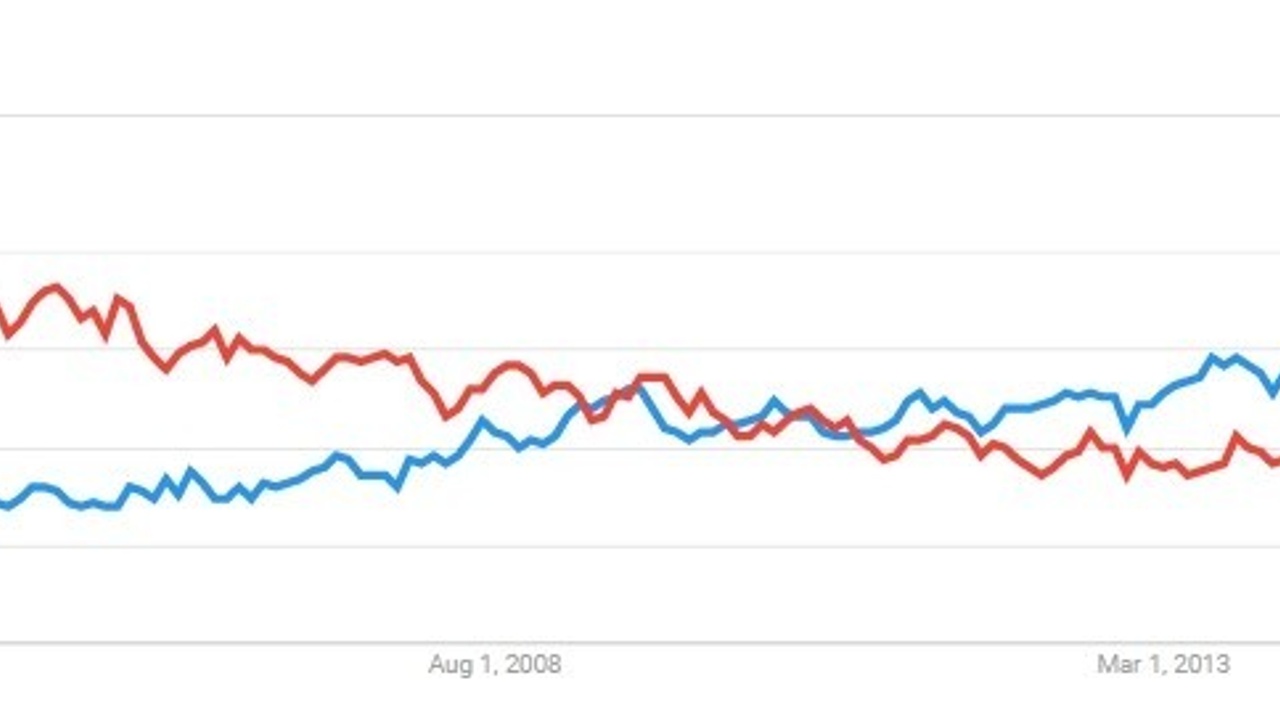
By James Jenkin
We see a lot of trends in TESOL. We know ‘grammar-translation’ is out, ‘post-method’ is in.
One tool to do this is Google Trends (trends.google.com), which shows the number of searches for a term over time.
TEFL and TESOL

100 signifies the peak popularity for the search term, and the line shows search interest relative to that point.
What does the chart show? First, the TEFL industry is seasonal – people look for jobs around July. Second, it suggests relatively few people use the term TEFL any more.
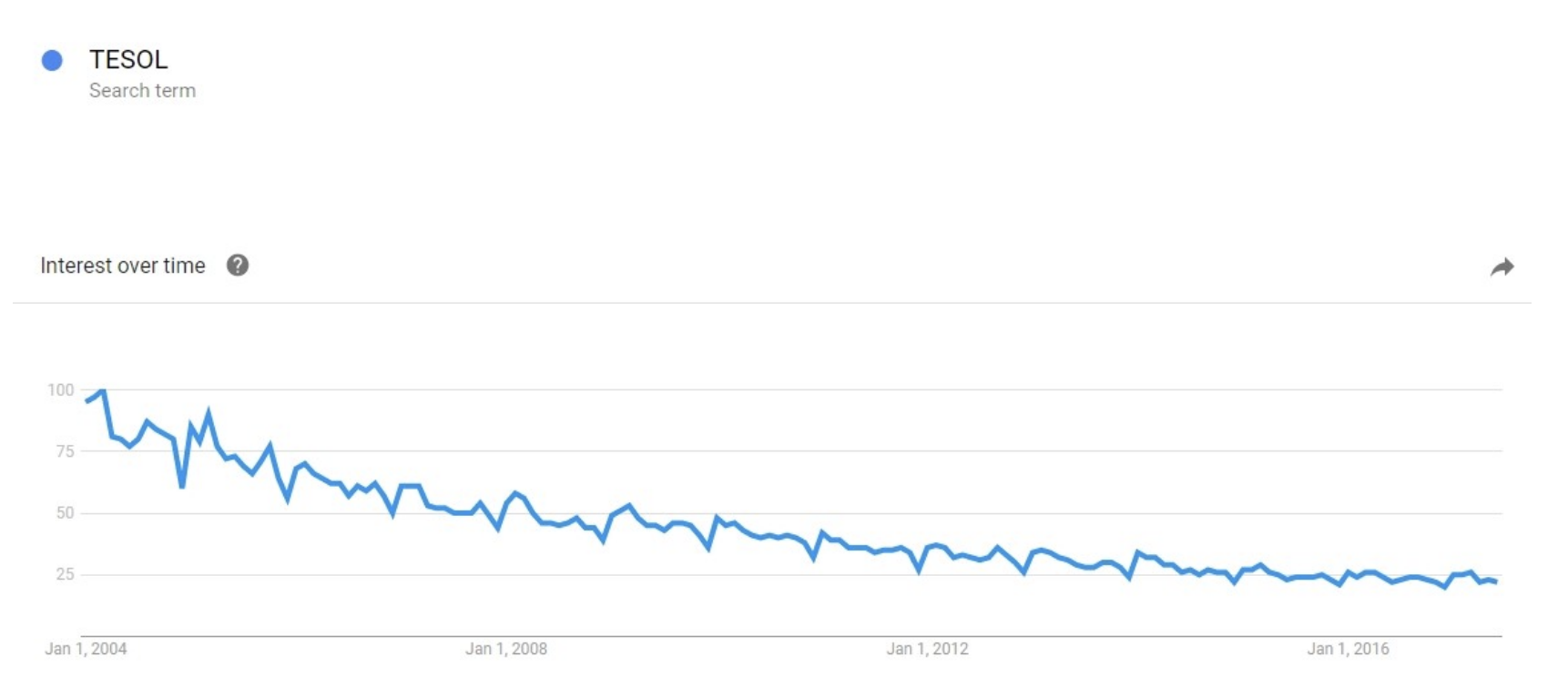
Interestingly, TESOL shows a similar trend. Why?
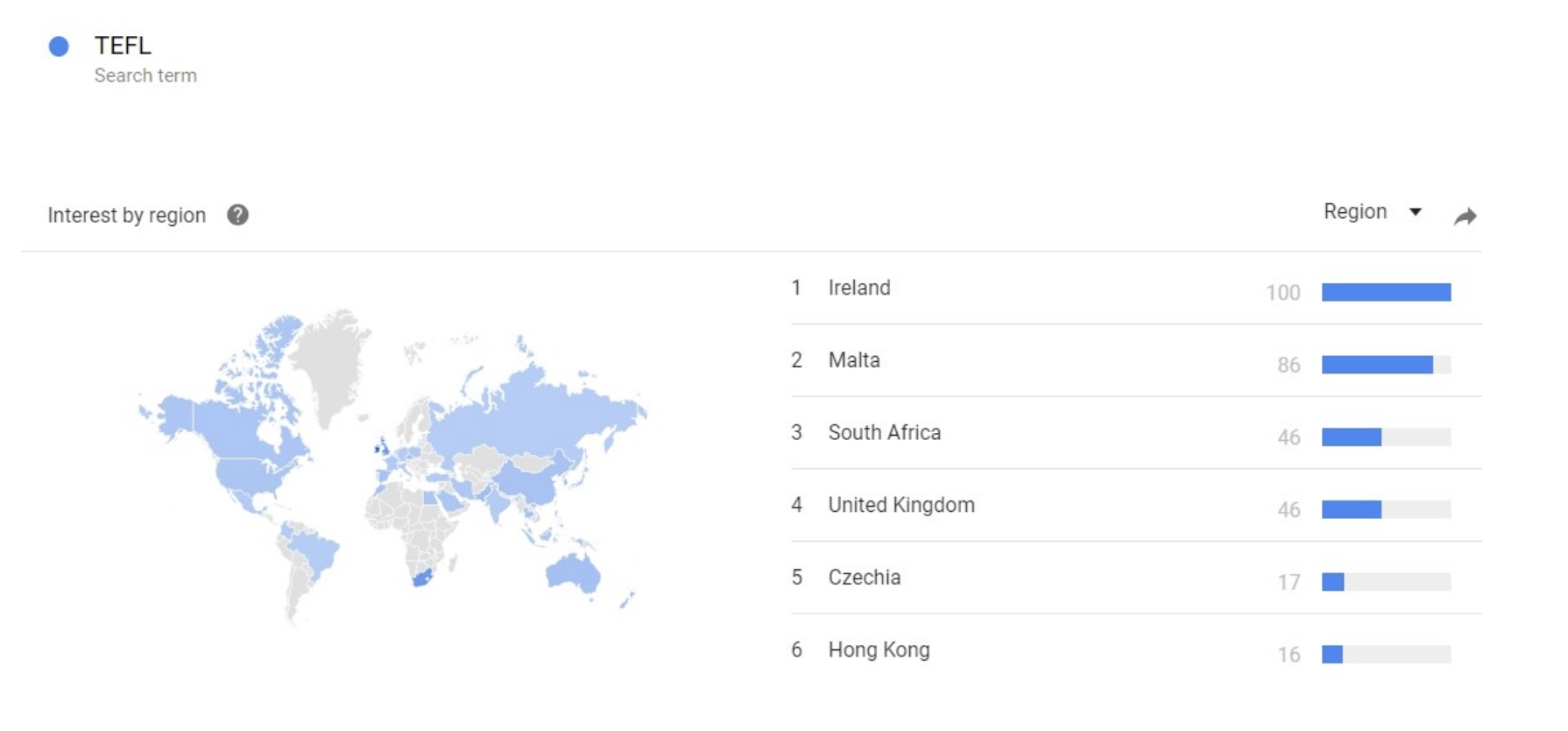
This shows where people are searching for the term TEFL. It’s much more associated with the UK and Ireland than the US and Canada, where it’s TESOL:
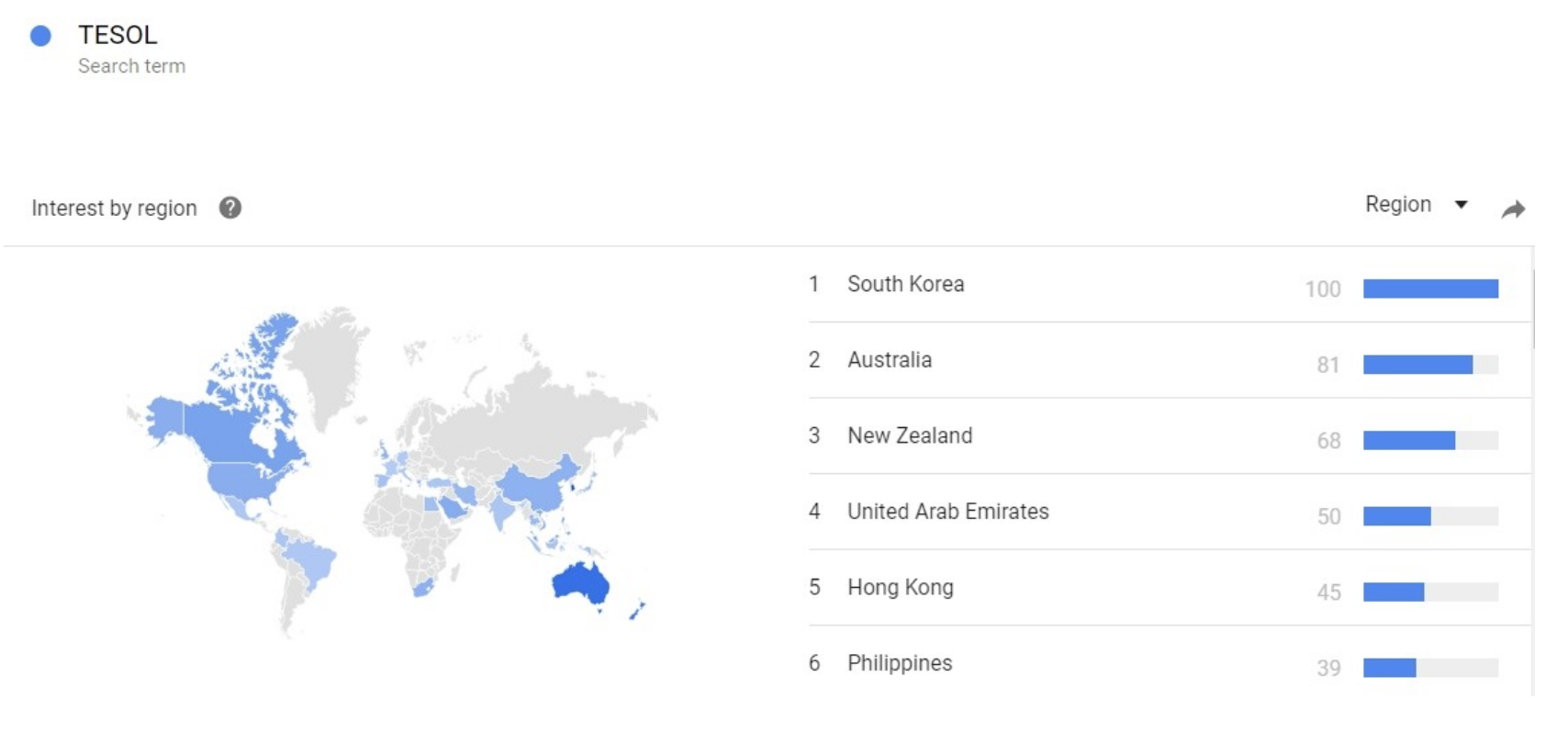
IELTS and TOEFL
Google Trends also allows you to compare two or more terms.

Demand for IELTS seems to have overtaken TOEFL.
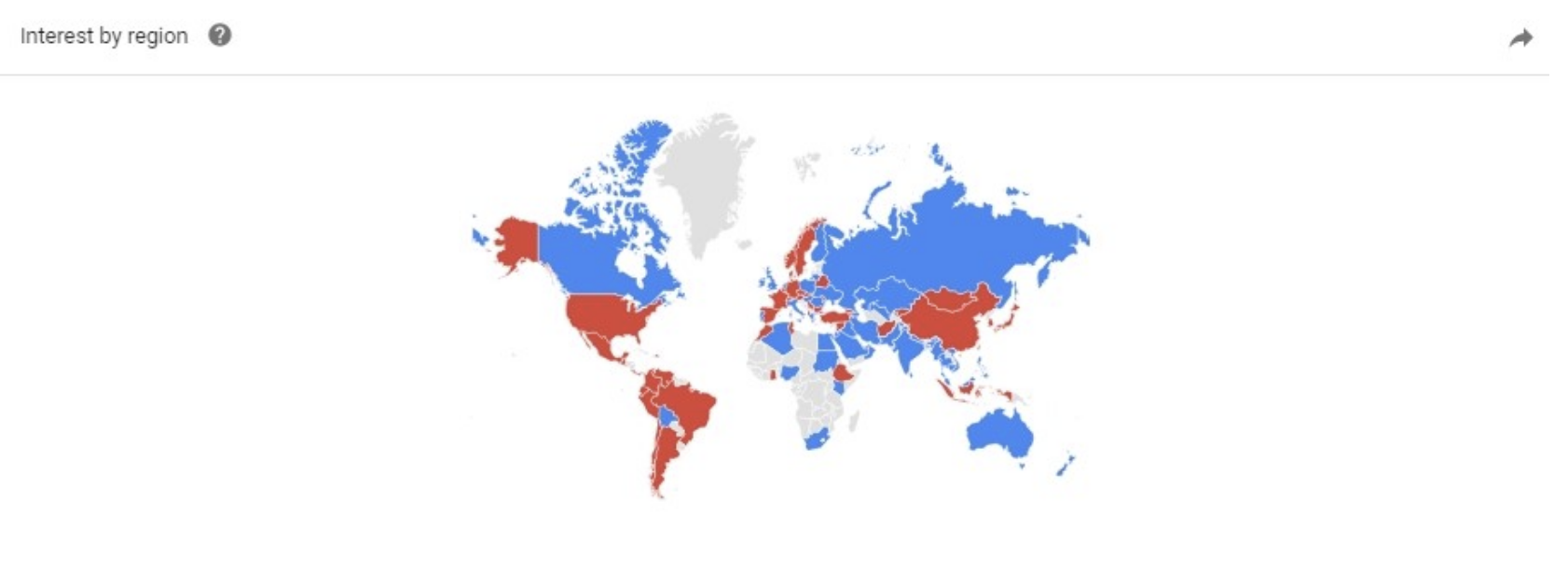
As you might expect, TOEFL’s still big in the US, South America, North Asia and Western Europe.
Pronunciation and grammar
How is interest towards these changing?
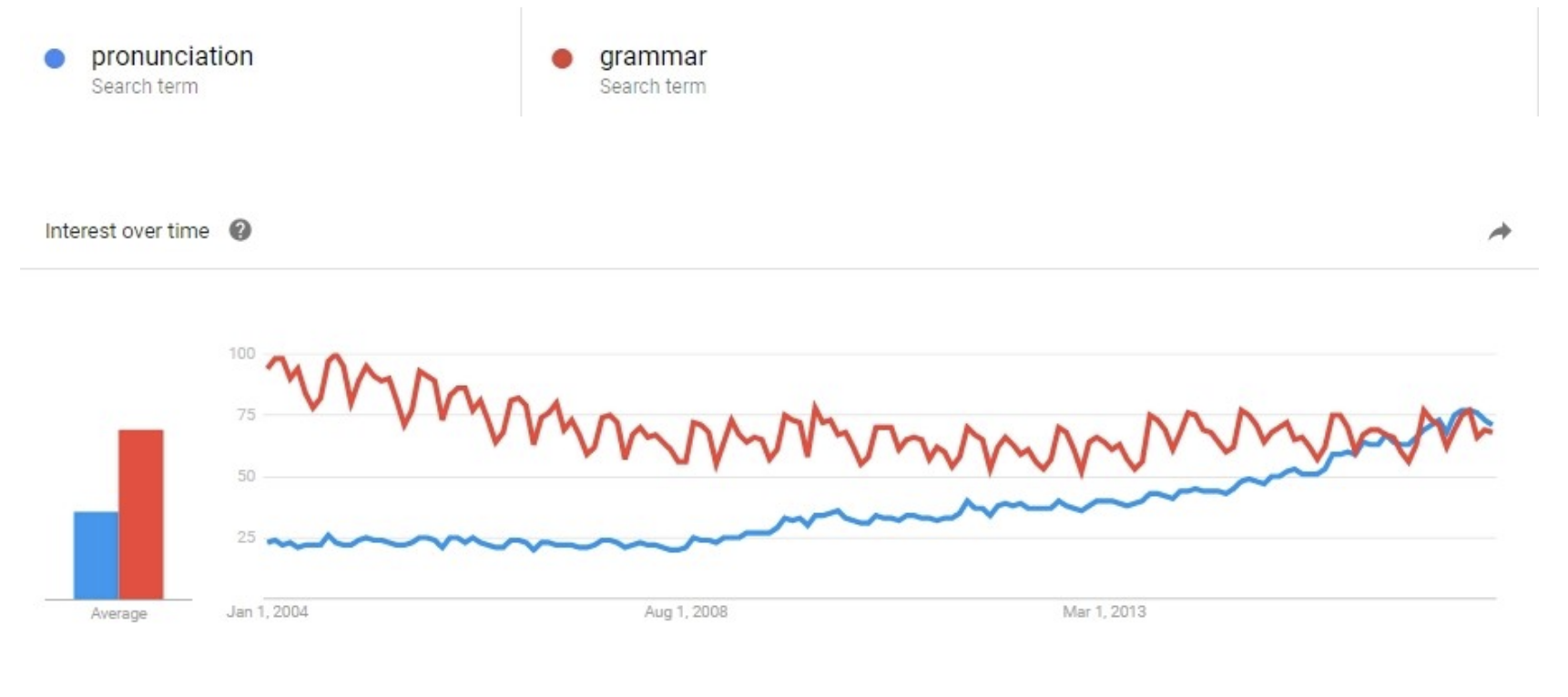
We’re still interested in grammar. But over the last 7-8 years, interest in pronunciation has grown significantly – which is, I’d argue, a healthy development.
It would be interesting to speculate why interest in pronunciation is highest in the US, Canada and South Africa – and not so high in, for example, Australia.
Varieties of English
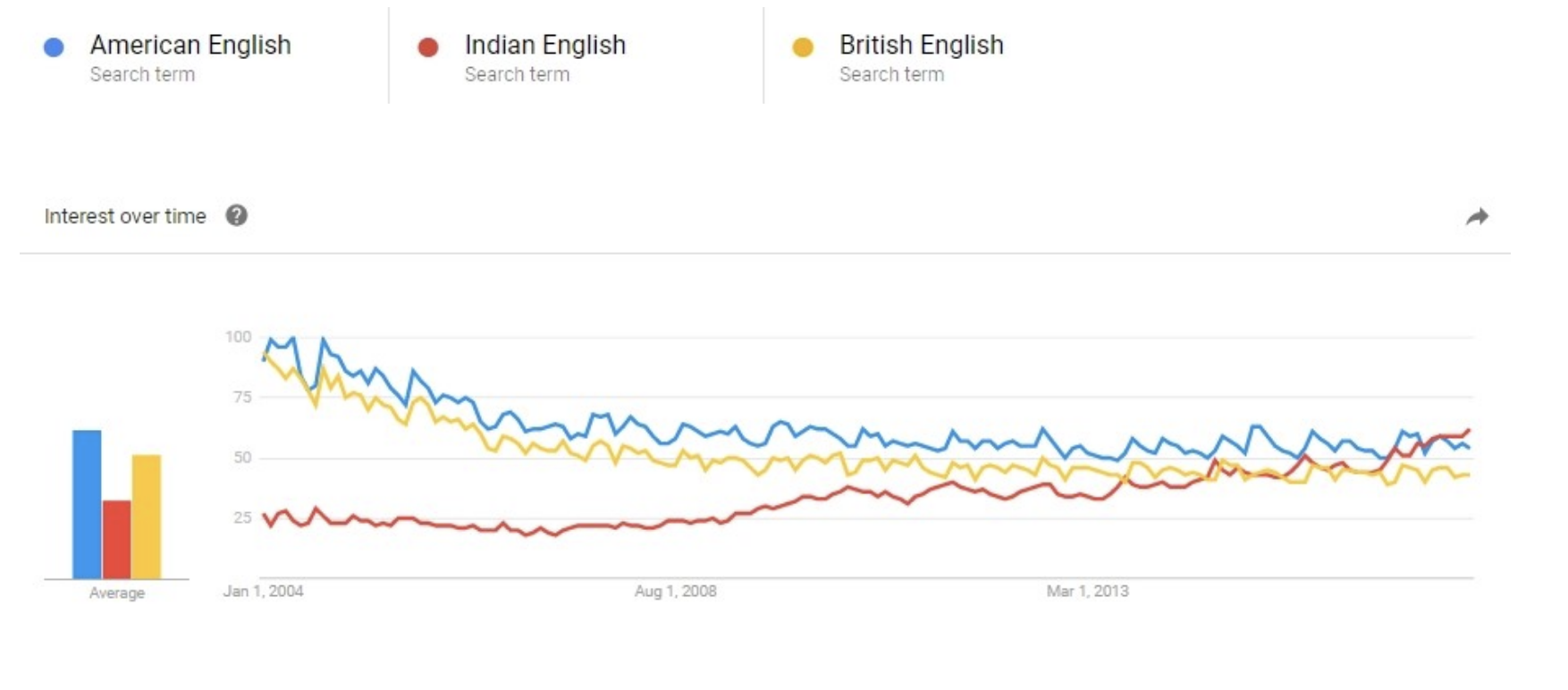
It’s fascinating to see interest in Indian English has steadily closed in and overtaken the other two. Of course, these results have limitations – for example, people may be searching for ‘US English’ as well as ‘American English’ – but they tell us something.
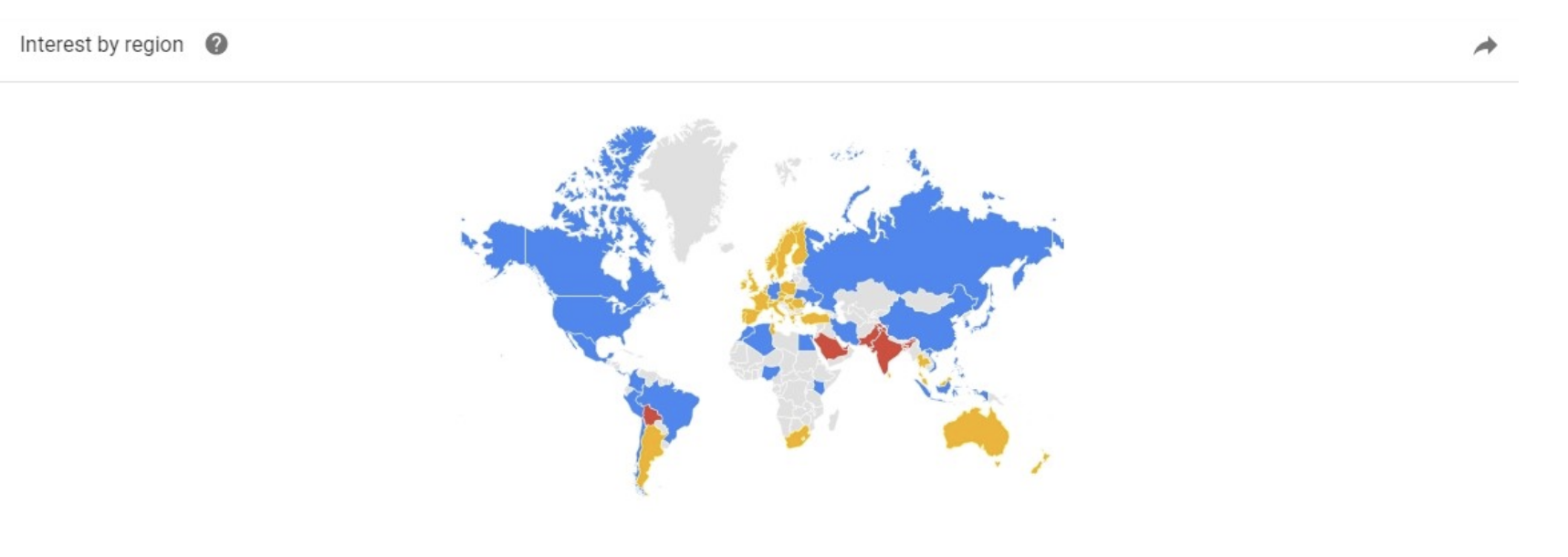
It’s ‘reassuring’ the old colonies still look up to the mother country. Perhaps, colonialism is still alive and well.
We’d love to see what you can find on Google Trends as well.
James Jenkin has worked in the field of TESOL for over twenty years as a teacher, teacher trainer, curriculum designer and academic manager. He is an IELTS examiner and has an MA in Applied Linguistics from Monash University, Australia.
Image source: ©Google

